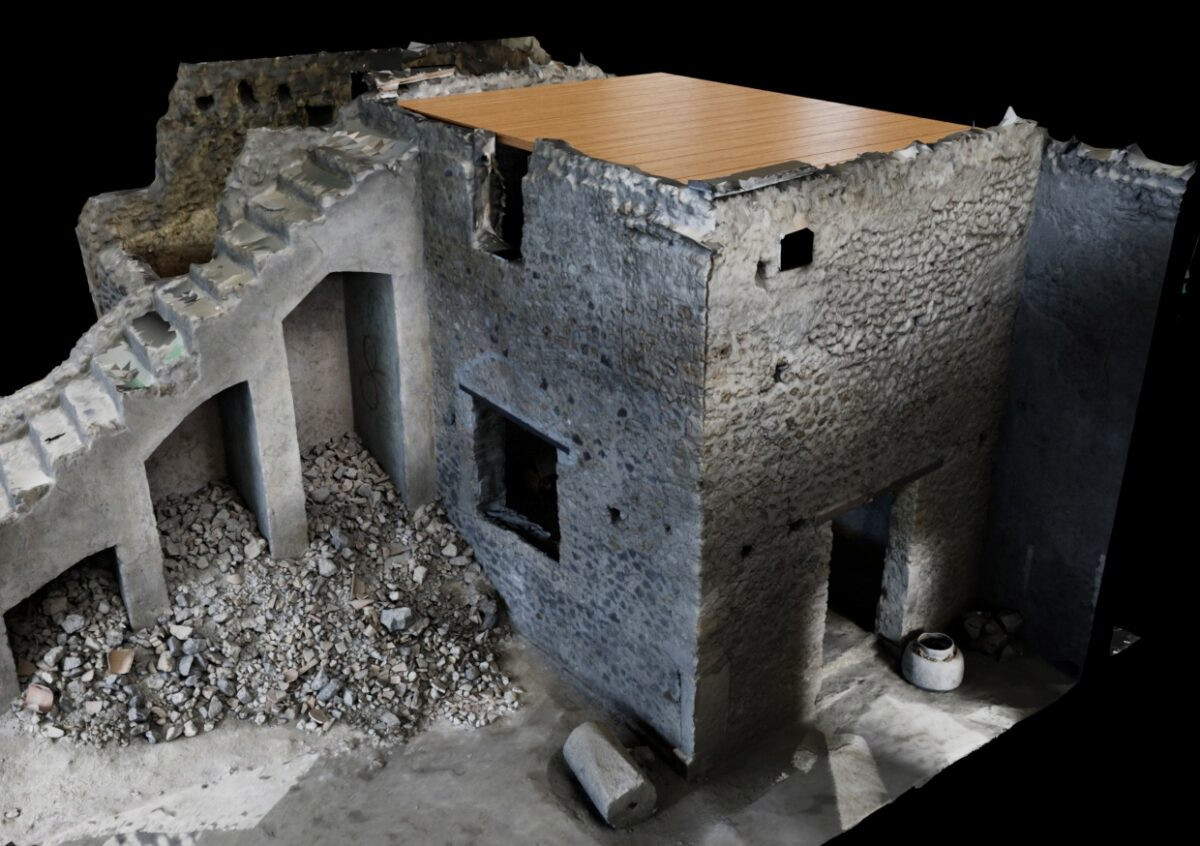Perhaps the residences of Pompeii ’s most influential families were also embellished with towers. This is the hypothesis proposed in the new study The Tower of the House of Thiasus. A new research project for the documentation and digital reconstruction of ’lost’ Pompeii, published today in the e-journal of the Pompeii excavations: https://pompeiisites.org/e-journal-degli-scavi-di-pompei/.
The research is part of an innovative digital archaeology project aimed at reconstructing the upper floors of Pompeii’s often-lost buildings. In particular, archaeologists led by Pompeii Archaeological Park director Gabriel Zuchtriegel and Susanne Muth, a professor in the Department of Classical Archaeology atBerlin’s Humboldt University (Winckelmann-Institut), in collaboration with the Park itself, focused on a monumental staircase in the House of Thiasus, which appears to rise to nowhere. From this element arose the hypothesis that the staircase led to a lookout tower, perhaps used to observe the city, the gulf, and, at night, the starry sky. This is a plausible idea, supported by numerous literary and iconographic references: just think of the tower of Maecenas, from which - according to tradition - Nero observed the burning of Rome, or of Pompeian paintings depicting towers as recurring elements in villas, which later became models for the urban dwellings of the elite.
The published article presents the first results of the POMPEII RESET project, a non-invasive research program that aims to use the latest digital technologies to document and reconstruct in 3D what remains and what has been lost. In its first phase, the project involves three-dimensional modeling of the preserved buildings; in the next phase, digital reconstruction and virtual simulation of the lost structures using digital twin.

The use of these virtual documentation and restitution technologies opens up new perspectives not only for archaeological research, but also for monument preservation and dissemination of ancient heritage. Through high-precision digital scans, scholars can restore a complete view of ancient living spaces, reconstructing the way they were lived in and perceived in the past.
The House of Thiasus, located in Insula 10 of Regio IX, represents a particularly relevant case study. Recent excavations conducted by the Pompeii Archaeological Park have in fact uncovered new data, now being analyzed by the international research team as part of the POMPEII RESET project, which involves Park officials, researchers and students from Humboldt University in Berlin.
“Archaeological research in Pompeii is very complex. In addition to field research with excavations that return intact contexts about life in the ancient world and new stories to be told about the tragedy of the eruption, there is also non-invasive research, made up of study and reconstructive hypotheses of what has not been preserved, but which completes our knowledge of the site,” commented Director Zuchtriegel. “The ’Lost Pompeii’ consists mainly of the upper floors, which are essential for understanding life in the ancient city. By putting the data together in a 3D digital model we can develop reconstructive hypotheses that help us understand the experience, spaces and society of the time.”

 |
| Perhaps the domus in Pompeii also had towers: new digital archaeology research |
Warning: the translation into English of the original Italian article was created using automatic tools. We undertake to review all articles, but we do not guarantee the total absence of inaccuracies in the translation due to the program. You can find the original by clicking on the ITA button. If you find any mistake,please contact us.